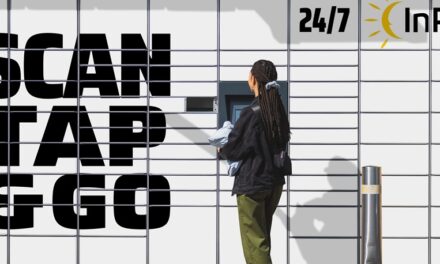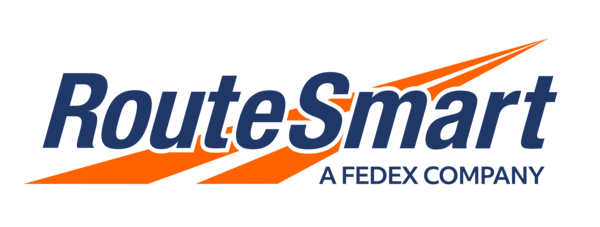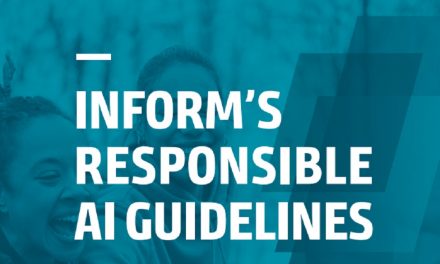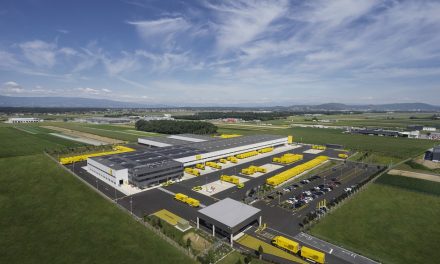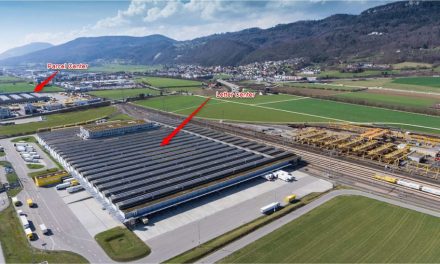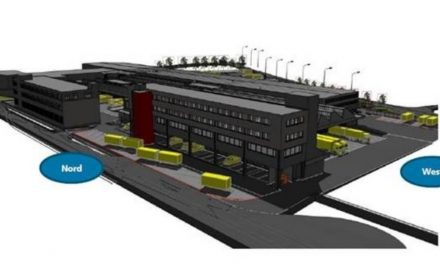
Tech Talk – Emerging Tech

By Matthew Wittemeier and Dr. Eva Savelsberg from INFORM’s Logistics Division
The technology world around us is constantly changing. While the pace of change for post and parcel operators is a bit slower, it isn’t entirely isolated from emerging tech and its potential impact. Having only just gotten our heads around the last round of game changers like big data, cloud, and the Internet of Things (IoT) you might be discouraged by the idea of more technology. But stay the course as some of this tech could significantly impact how you run your post and parcel business in 5-10 years’ time.
Technology is Here to Stay
“Come here. I want to see you.” were the first words communicated over the telephone by Alexander Graham Bell to his assistant in 1876. After that first call, Bell penned a letter to his father where he noted, “… the day is coming when [telephone cables] will be laid on to houses just like water or gas – and friends converse with each other without leaving home.” Despite its revolutionary ability to connect people anywhere, anytime, it took approximately 75 years for the telephone to reach 50 million users. A lack of infrastructure and technological constraints are generally the two factors noted when discussing the very slow, by today’s standards, adoption of the technology.
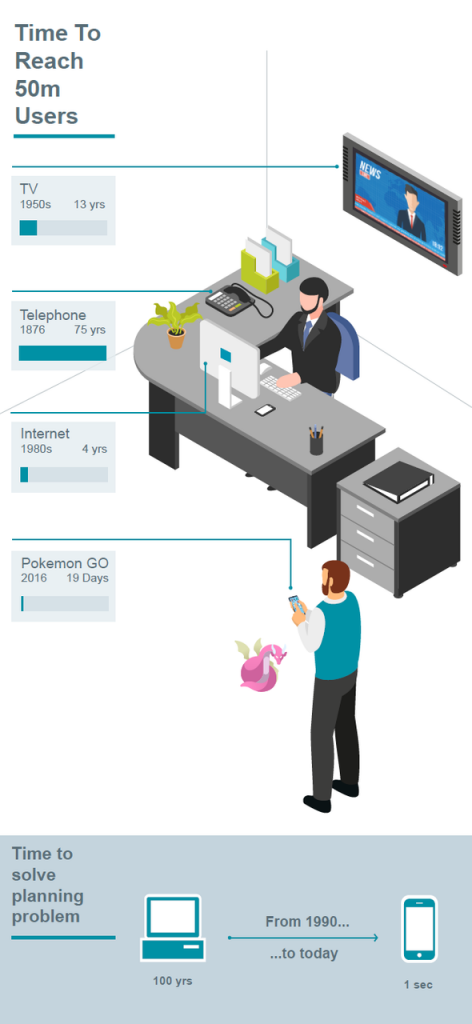
Time to reach 50m users infographic
Fast forward to the 1950’s and the TV was introduced; it took TV about 13 years to reach 50 million users. Fast forward again to the late 80’s and the first commercially available internet hit the market – it took approximately 4 years to reach 50 million users. In 2016 Pokemon Go was launched and the app reached 50 million users in 19 days! The pace of technological adoption has been quickening ever since Graham Bell. The challenges that hindered the adoption of the telephone are all but non-existent today.
Today, the internet serves as a common backbone for almost all technological innovation. While not perfect, it’s common use architecture allows anyone, anywhere to develop and distribute a new technology with ease. Further, since the mid 1900’s Moore’s law has seen the steady doubling of technological capability every two years or so. While Moore’s law might be coming to an end, it doesn’t change the fact that many of us carry a mini-supercomputer in our pocket. Ironically, these supercomputers take us back to the beginning of the story; our smartphones are designed to supersede the, now, outdated telephone system.
Today, consumer facing technology companies are able to innovate on time-frames measured in months and users can adopt those innovations in mere days. While the pace of innovation and adoption is slower in the enterprise IT world – it too has dramatically increased over the past two decades allowing corporations around to world to leverage savings and growth at the same time.
Over the past 25 years, improvements in computer hardware have resulted in an increase in computing power by a factor of 2,000 times. This seems impressive until one compares it to the advances in optimization algorithms over the same period. For instance, Linear Programming (LP) algorithms, considered one of the most important class of optimization techniques by many experts, have improved by a factor of 1.4 million times. When combined, the effects of both advances generate a tremendous 2.8 billion times improvement in processing capability. To better understand this, a planning model, using Linear Programming, that takes us a second to solve today, would have taken almost 100 years to solve in the 90’s.
Emerging Technologies
There are five emerging technologies that are worth keeping an eye on. Let’s define each and then look at how they might impact the post and parcel industry.
Virtual Reality (VR)
Virtual reality is defined as an artificial, computer-generated simulation of a three-dimensional environment requiring dedicated hardware (Google Cardboard, headset, controller, etc.) to generate an immersive user experience not dissimilar to first-head reality. Major retailers around the world are looking to VR as the next big thing in online shopping. The advantage of VR over traditional online shopping is products that are hard to buy online now (i.e. fashion products) will be a breeze in the digital environment. With the rise in VR shopping, parcel operators should expect a subsequent rise in parcel volumes. It’s probably too early to call it for sure, but we think VR-commerce will see an even greater growth in parcel volumes over what will become its antiquated predecessor, e-commerce.
Augmented Reality (AR)
Augmented reality layers digital elements and data onto the real-world blending digital information and real-world imagery together to create an enhanced experience. Its main advantage over VR is that it doesn’t require dedicated hardware. And with major smart-device manufacturers like Apple announcing both hardware and software level support for AR, we’re likely to see an increase in its adoption across the board. Again, the impact to parcel operators lies in the growth of e-commerce and parcel volumes. The proof is in the pudding. Just this year L’Oreal invested big in AR allowing their products to be superimposed onto you in real-time allowing you to preview how a beauty product would actually look. AR also has a role to play in optimizing last-mile delivery. From augmented delivery maps laid onto the drivers actual view to applications that assist with packing delivery vans and finding parcels – major gains can be made here in the coming years.
Blockchain
Blockchain is a technology platform that provides a secure, digital ledger in which transactions are recorded in chronological order and made public across multiple nodes that hold a shared copy of the ledger. Blockchain must be the tech buzzword of 2018 – and is showing no signs of slowing down as we look to 2019. We have all heard of it, likely because of the extravagant value of Bitcoin at the end of 2017. Nevertheless, blockchain stands to transform every industry in the world and post and parcel is no exception. Whether we’re talking end-to-end traceability (real accountability) of post and parcel items or postal operators fulfilling id management services with the blockchain; it is coming.
Edge Computing
Edge computing allows data produced by IoT devices to be processed closer to where it is created instead of sending it across networks to data centers (or the cloud). In short, edge computing leverages the massive increases in computing power that is now common place. We carry more computing power in our pockets to make phones calls (our smartphones) than was available to send men to the moon in the 1960’s. This coupled with the fact that reliable data transfer and bandwidth have remained challenges and one can see why edge computing is on the rise. For post and parcel operators, it means that the smart devices you’re investing in today may become peripheral decision-makers tomorrow. As you implement tech like drones, robots and self-driving vehicles – these technologies will make decisions on their own. We need to be comfortable with that or face a bandwidth bottle-neck that inhibits your organization.
Digital Twins
A digital twin is a virtual model of a process, asset, product, or service. IoT devices with digital twins pair the virtual and physical worlds together allowing an in-depth analysis of data and real-time monitoring of systems to improve one’s ability to respond to real-world scenarios. It isn’t hard to imagine a parcel network in 5-10 years where every vehicle, load-unit, staff member, and even parcel has a digital twin inside your planning and optimization systems allowing you to predict problems and make better decisions in real-time.
Powering the Future
Some of the above five technologies will come to play a significant role in the future. Exactly how and where will, of course, remain to be seen. But they each possess the ability to add value to post and parcel operators – whether that value be monetary, social, or cultural. Like it or not, the future is one that will be powered by technology and there are two more technologies to add to the mix. But they are special because they enable each of the technologies introduced above in some way shape or form as well as offering their own value.
Artificial Intelligence (AI)
Artificial Intelligence is an area of computer science that’s concerned with building systems that demonstrate intelligent behavior. Most people find it difficult to agree on a precise definition of intelligence, and so people’s view of what Artificial Intelligence means also tends to diverge. For most people, when they hear the term Artificial Intelligence, or AI, they think of a General AI, or human-level AI, that can mimic all aspects of human intelligence. The simple truth, however, is that today, AI is far away from this. Instead, AI vendors have succeeded in building niche, or so-called Narrow AI systems that know how to do reasonably specific things very well (for instance, play chess, translate between languages, understand natural language, or drive autonomous vehicles). It is these Narrow AI systems that are now making their way into our industry at a rapid pace as part of the Fourth Industrial Revolution.
Machine Learning (ML)
In contrast with General AI’s goal of mimicking human intelligence, Machine Learning tools use algorithms to iteratively learn from and adapt to data, enabling computers to find hidden insights without being instructed where to look. A beginner’s example for this can be found in your email inbox: spam filters. Simple rule-based filters are not very effective against spam, since spammers can quickly update their messages to work around them. Instead, ML enhanced spam filters continuously learn from a variety of signals and tailor themselves to the email needs of the individual user. ML is already making its way into terminals around the globe as a means to mine data to improve processes.
Closing Thoughts – Technology and Millennials Matter
Some of the technology discussed may never impact the ports industry. Some might take longer than 5-10 years. In discussing them here, the point isn’t to say that they are all going to revolutionize your operation. Some of it may be too radical for some operators or their management teams. That’s ok. Rather, the point is to put it on your radar, to bring it to the front of your mind. One should consider the plight of the taxi industry globally when choosing to ignore or embrace new technology. Smartphones and apps didn’t appear overnight but had taxi companies the world over chosen to be innovative and be progressive, UBER, and the taxi companies fight to remain relevant, probably wouldn’t exist today.
On the whole, the post and parcel industry is comprised predominately of baby boomers with a small proportion of Gen X, and Gen Y workers. In short, we have an aging workforce problem. Attracting millennials is as much about attracting young workers as it is about attracting skilled workers and underlying the skills young people bring is tech.
By 2025, millennials will make up 75% of the global workforce, i.e. the generation of “pen and paper” operators is a dying species. Millennials have grown up with instantaneous communication and “high-tech” is woven into all aspects and areas of their life. Millennials will not only penetrate the logistics workforce in the maritime industry, they will also be the ones who drive demand on the customer side. “On-demand” and “digital” is their way of life – anything else will not be accepted; technology is at the core of this generation.
When you combine the technological innovations and an entire generation of digital natives – the Millennials – we are headed directly into an era where technology will not support post and parcel operations, but rather define them. We’re seeing the start of this with automation, where processes have been redefined to suite robotic equipment. The addition of technologies like AI and Machine Learning (ML) will see more significant changes to come. The innovators in the industry have the power, now, to define what the operators of the future will look like and those that lag behind their innovation will have no choice but to meet that standard or risk becoming irrelevant.
ABOUT INFORM
INFORM specializes in Agile Optimization to improve operational decision making in post and parcel operations.
INFORM’s Agile Yard Management software (YMS), SyncroTESS, optimizes the handling of load units in post and parcel centers. Through the synchronized interaction between gate, yard, and post and parcel center, SyncroTESS enables an efficient, transparent and optimized yard management reducing cost, increasing yard productivity, and improving on time performance. INFORM’s YMS is purpose built for the post and parcel industry with highly specialized features designed to deliver tangible results and measurable value.
For more information about INFORM: https://www.inform-software.com/parcel
ABOUT THE AUTHORS
Dr. Eva Savelsberg is Senior Vice President of INFORM’s Logistics Division. She specializes in Agile Optimization Software that renders a wide range of post and parcel processes more productive, agile, and reliable. Eva is also lecturer at the University of Aachen (RWTH), where she received her PhD in mechanical Engineering in 2002. Eva has published 5 books and over 35 papers on innovation in freight transportation.
Matthew Wittemeier is responsible for Marketing and Sales of INFORM’s Logistics Division. He brings over ten years marketing experience from a breadth of industries including aviation, creative, finance, and software services. He holds a Bachelor of Management and Professional Studies from Southern Cross University in Australia.


